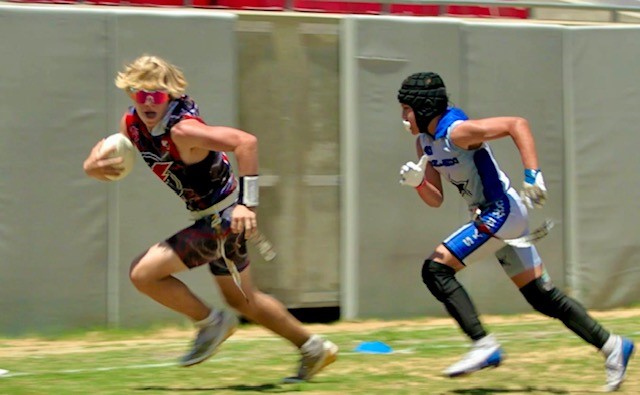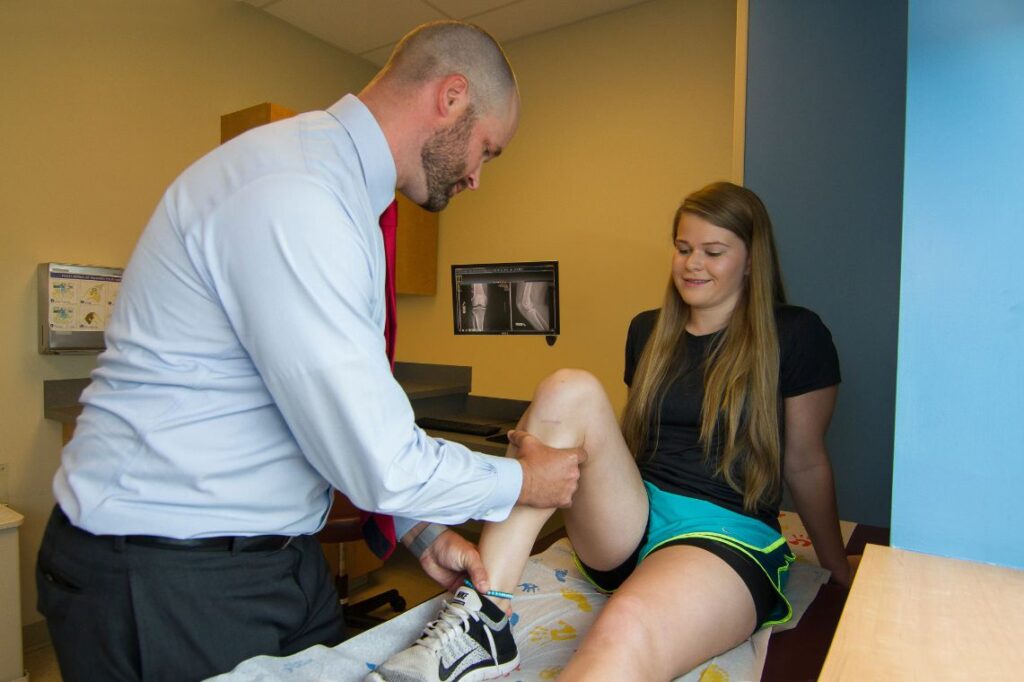Iliotibial (IT) Band Friction Syndrome is one of the most common causes of outer knee pain in active kids and teens. It happens when the thick band of tissue that runs along the outside of the leg rubs too much against the bone near the knee. While it can be uncomfortable, it’s a treatable and temporary condition. At Children’s Orthopaedic & Scoliosis Surgery Associates (COSSA), our pediatric orthopaedic specialists help young athletes recover safely, reduce pain, and get back to doing what they love.

The iliotibial (IT) band runs from the hip down to the knee and helps stabilize the leg during movement. When this band becomes tight or irritated, it can rub on the outside of the knee, causing pain and inflammation. IT Band Syndrome is common in sports that involve frequent bending and straightening of the knee—like running, cycling, or jumping.
This condition often affects kids and teens who train intensely, increase their activity levels too quickly, or use worn-out shoes. Certain body mechanics—like flat feet, leg length differences, or weak hip muscles—can also increase the risk.
The main symptom is pain on the outer side of the knee, especially during activity. The pain may start gradually and worsen when running downhill, climbing stairs, or squatting. Some children may feel a snapping or popping sensation as the IT band moves over the bone. Resting usually helps relieve symptoms.
Your provider will carefully examine your child’s leg, hip, and knee to determine the source of pain. They may press along the outside of the knee to find tender spots, test flexibility and strength, or observe walking and running mechanics. In some cases, imaging such as an X-ray or MRI is used to rule out other knee conditions.

Most children recover well with simple, non-surgical treatment. The focus is on reducing irritation, improving flexibility, and restoring proper movement.
Common treatments include:
Rest and reduced activity
Ice and anti-inflammatory medications
Physical therapy or stretching and strengthening exercises
Wearing supportive shoes and avoiding uneven ground
Gradually increasing training intensity over time
In some cases, a corticosteroid injection may be used to ease inflammation. Surgery is rarely necessary. With rest and rehabilitation, most children improve within four to eight weeks.
To help prevent IT Band Syndrome, children should:
Replace running shoes regularly
Warm up and stretch before activity
Cross-train with low-impact exercises
Avoid overtraining or sudden increases in mileage or intensity
Strengthen hip and core muscles for better leg support
Small changes in training routines and good stretching habits can make a big difference in keeping the IT band healthy.
At COSSA, our team understands how important sports and movement are for growing children. Whether your child runs, bikes, or plays team sports, we’ll create a personalized treatment plan that promotes healing and prevents future injuries. With the right care and guidance, most kids recover fully and return to activity stronger than before. To schedule an appointment, please call (727) 898-2663.